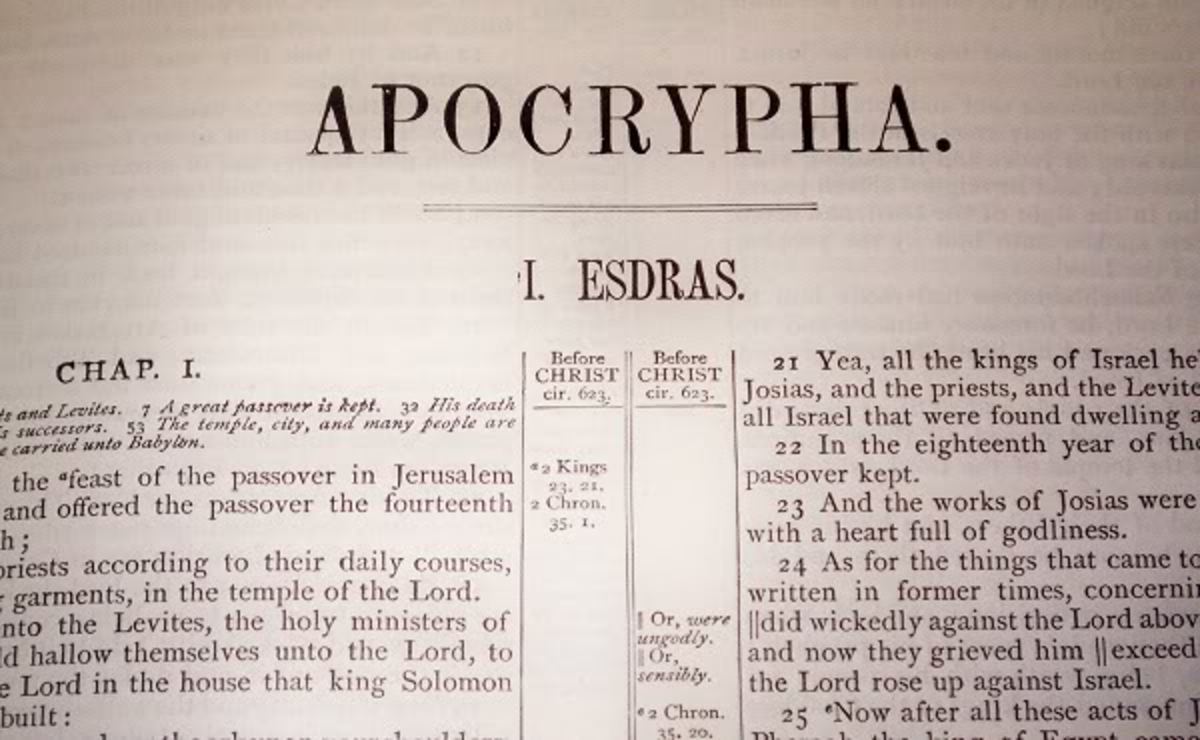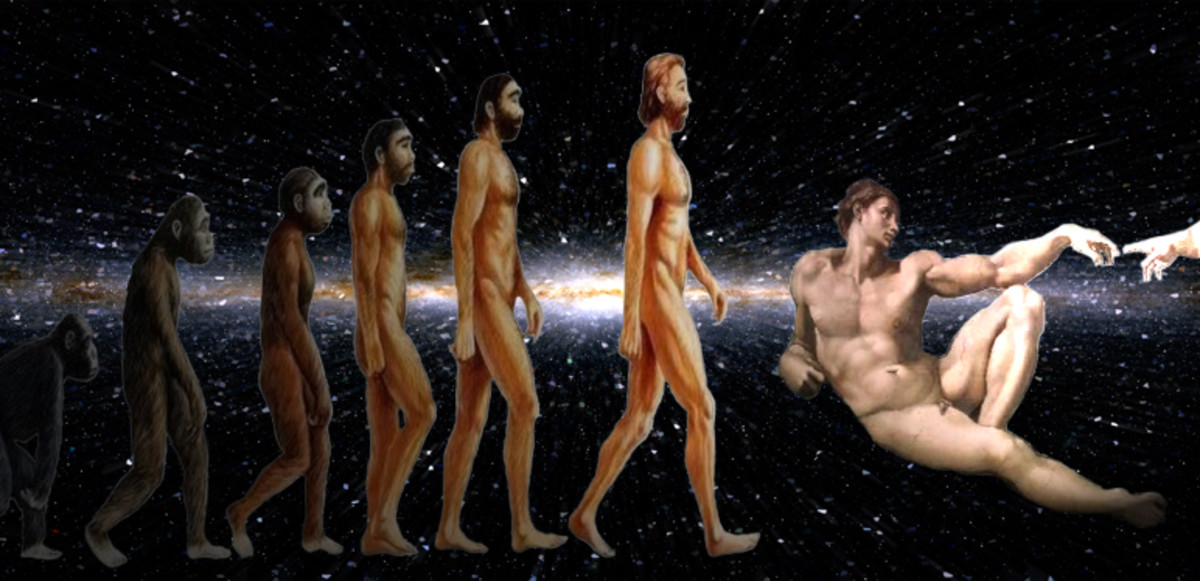Christian Orthodoxy and Heresy: Definition and Change
From very early on, certain Christianities, unlike the pagan religions surrounding them, placed strong emphasis on their exclusive claim to “the truth” (Ehrman, NT, 452). These groups, believing eternity itself to be at stake, attacked the beliefs of not only other religions, but of other kinds of Christian believers as well. Charges of heresy and grievous error were leveled, not only by proto-orthodox Christians, but also at proto-orthodox Christians by their opponents (Coptic Apocalypse of Peter, Verses 74 – 78; Ptolemy's Letter to Flora 3:3). Such charges, however, cannot be taken at face value, because they both hinged on subjective interpretations and embodied variegated and ever-shifting cultural zeitgeists. Additionally, each group employed many of the same dubious sorts of arguments as the other groups for establishing their own beliefs and discrediting the others.
Different groups of Christians based their doctrines on different interpretations of scripture, and interpretation is, by nature, subjective. Vast doctrinal differences could arise from different interpretations or renditions of even a single word or phrase. For example, David Taylor credits a single minute textual variant with forming “the basis of an entire soteriological system” in Syrian Christianity (Taylor, Regional Diversity, 340). Likewise, different understandings of phrases such as those translated in English as “eternal fire” or “eternal torment” allowed for completely different views of the afterlife. For example, Origen's use of the phrase translated as “eternal fire and torments” (On First Principles, Preface to Book I, Verse 5) undoubtedly expressed a different notion than that same phrase expressed when uttered by Christians who believed that the damned would literally be tormented without end. After all, Origen believed that all beings would eventually be redeemed (Ehrman, After NT, 414). The inherent multivalence of words made such differences of interpretation inevitable, and the choice of one interpretation over another was a matter of one's individual perspective. Thus, the Christian Syriac poet Ephrem showed great wisdom by understanding that religious truth is “dynamic and multilayered . . . [and should be communicated] differently to each reader on each reading” (Taylor, Regional Diversity, 342).
If the interpretation of a few words could make for such great differences in doctrine, imagine the differences that could result from the omission of an entire book from one's local canon! For example, the bible of Georgia—where, incidentally, I lived for three years—didn't contain a translation of Revelation until the tenth century (Taylor, Regional Diversity, 338).
Accusations of heresy relied not only on interpretations biased through individual perspectives, but also on the attitudes of the surrounding culture, which varied both geographically and temporally. An example of geographical variation can be seen in ancient Syrian Christianity, which held as orthodox ideas found in the Odes of Solomon (Taylor, Regional Diversity, 342), which included hermaphroditic depictions of God (19th Ode, as quoted by Taylor, Regional Diversity, 341 – 342). Such conceptions surely might have struck many churches in the Roman empire as heretical. Temporal variation is exemplified by the fate of Origen's beliefs. Although his teachings were embraced until long after his death, times changed, and as they did, a new cultural/political ethos led to the anathema of his once-orthodox writings in 553 C.E. (Ehrman, After NT, 414). For another example of cultural change over time, we can look to the writings of Tertullian. In one of his many ad hominem arguments, he censures the so-called heretics' debased lifestyles. One example he gives of this is that “[their women] have the impudence to teach . . . [and] perhaps even to baptize” (Prescription of the Heretics, Chapter 41). To many modern readers, this argument sounds ludicrous, as though Tertullian were almost arguing in favor of his opponents. Such have gender conceptions changed, although sadly, not among all Christians. However, even before Tertullian's time, Paul named women as “prominent among the apostles” (Rom. 16:6), so it is obvious that the boundaries between the “heretics” and the “orthodox” are continually shifting.
Tertullian's attacks against the heretics' lifestyles serves well to lead into my last point. Each opposing group of Christians used many of the same, often tenuous, kinds of arguments against one another. Ad hominem attacks were employed by all sides. Although the proto-orthodox Christians complained against unfounded rumors among pagans that they committed unspeakable and wanton acts of wickedness (Athenagoras, Plea Regarding the Christians 2-3), they in turn hinted that gnostic Christians just might commit such atrocities (Irenaeus, Against the Heresies 25:4-5). The gnostic Christians, for their part, sometimes suggested that the proto-orthodox Christians were sensual and defiled blasphemers, both malevolently cunning and haughty (The Coptic Apocalypse of Peter 74 – 77).
Each opposing group, moreover, claimed both that they represented the faith of the apostles, and that their opponents did not. The gnostic Ptolemy's Letter to Flora avers that “[Christ's] disciples made these teachings known, and so did the apostle Paul” (6:6), and in the same verse even quotes Pauline and Deutero-Pauline epistles in support of its doctrines. Regarding gnostic Christian teachings, however, the proto-orthodox Christians maintained that these were not things that “the Lord taught, [or that] the apostles handed down” (Irenaeus, Against the Heresies 8:1). Tertullian would go so far as to argue that the gnostic Christians had no right to interpret scripture, since their teachings were not of apostolic origin (Prescription of the Heretics 21). But Tertullian's arguments here seem circular, something to the effect that doctrines can be considered correct if and only if they are taught by apostolic churches, and churches can be considered apostolic if and only if they teach the correct doctrines (Prescription of the Heretics 21, 32).
Additionally, the proto-orthodox Christians argued that their opponents' views were overly complicated and self-contradictory (Ehrman, After NT, 195). But to their opponents, they would have seemed self-contradictory. Consider their christology, in which Christ is said to be “of flesh, and yet spiritual, born yet unbegotten” (Ignatius, Eph.7:2, as quoted by Ehrman in NT, 447). What could sound more self-contradictory?
Finally, I'll bring this discussion full circle by returning to the matter of interpretation, in order to point out one last questionable technique that opposing groups each used to support their arguments. Both proto-orthodox and gnostic Christians utilized methods, such as gematria and allegorical interpretation, to decrypt meanings supposedly hidden in the sacred texts. These meanings, of course, promoted their own respective theological agendas. For instance, certain gnostic Christians, pointing to the record of Jesus's age when he “disputed with the teachers of the Law” (Irenaeus, Against the Heresies 3:2), found evidence for their theogony of twelve Aeons. Although proto-orthodox Christians attacked the gnostic Christians “for not accepting a literal, straightforward understanding of the biblical text” (Ehrman, After NT, 195), they offered interpretations that sound equally contrived when, for example, they attempted to show by gematria that circumcision merely served as a figurative pointer to the coming of Jesus himself (The Epistle of Barbabas 9:7-8). If the act of interpreting the literal meanings of words can result in vastly different viewpoints, how much more can such fanciful exercises lend support to any position at all? So we find that allegorical interpretation did, in fact,support irreconcilably different schools of thought.
Thus, the accusations of heresy from all sides must not be taken at face value. These opinions were based, not on some objective and categorical standard, but on highly individual interpretations, and on cultural standards which varied over place and time. Further, all sides of these debates shared many of the same types of arguments, which were often fallacious at that.








